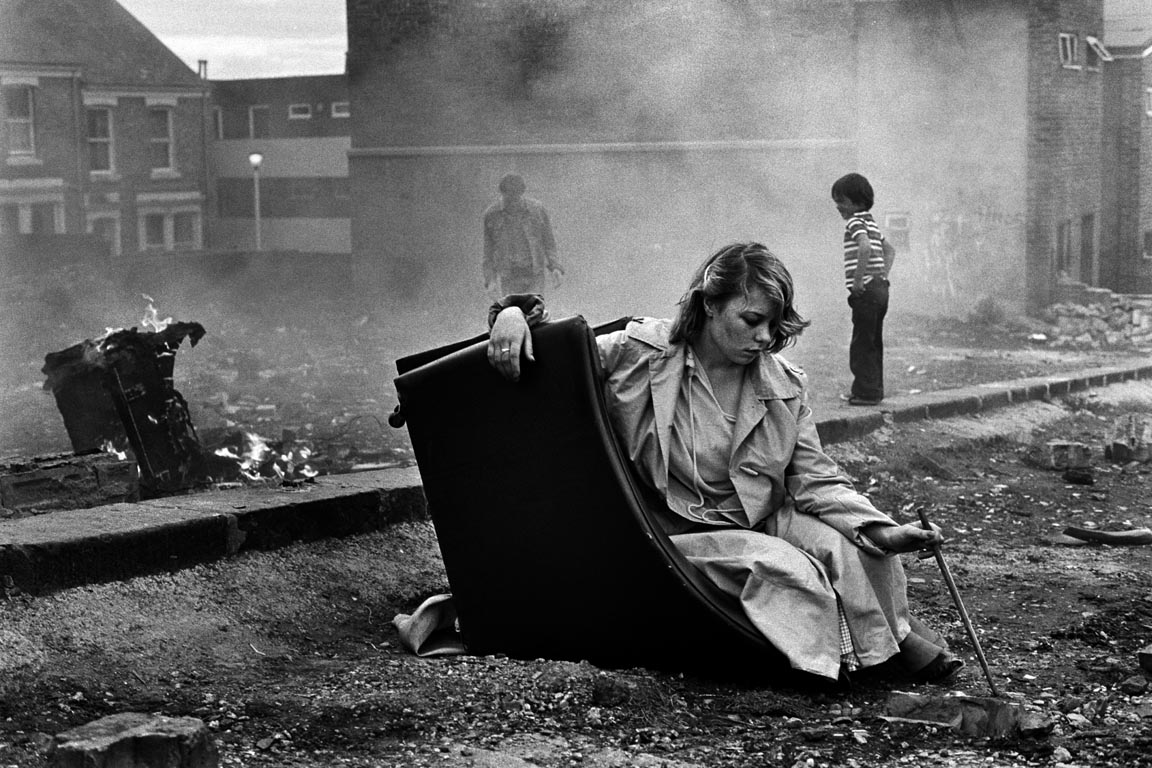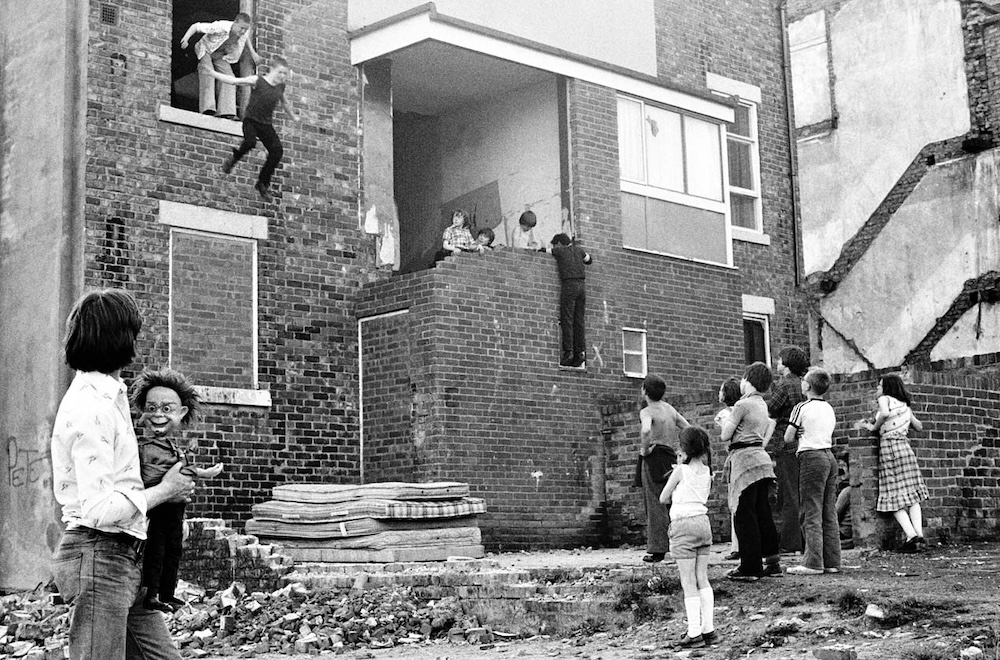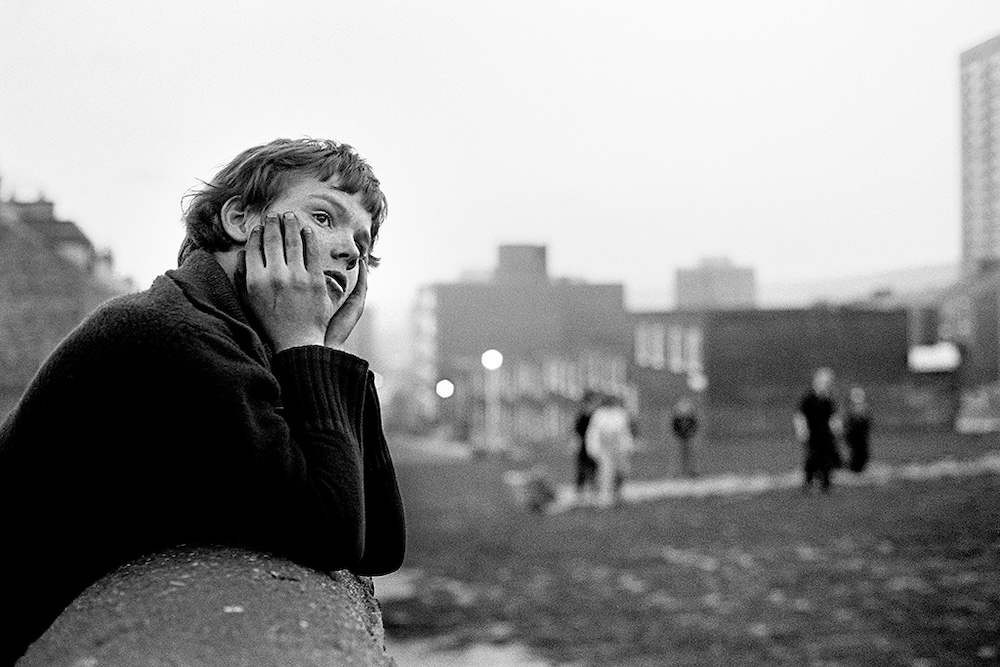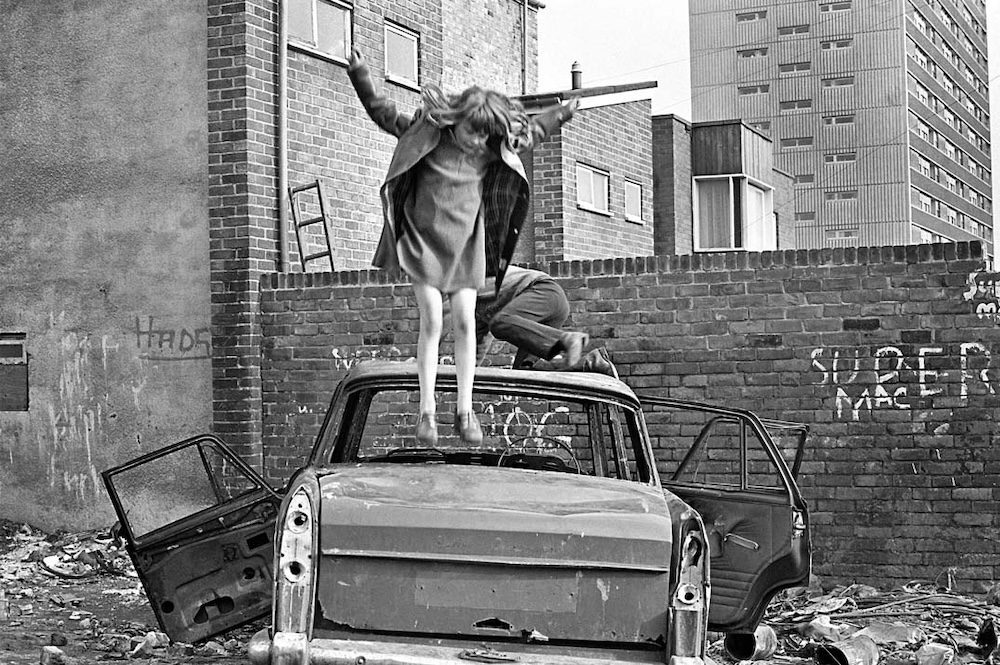Tish of the Day: Paul Sng in conversation

Director Paul Sng on his new documentary feature Tish, which charts the life, times and work of Tish Murtha, a photographer whose work still lives on years after her tragic death…
It would be presumptuous and patronising to call Tish Murtha the best photographer you’ve never heard of, not knowing who you’ve heard of, for starters, but she may well be the best photographer whose name you didn’t know.
At least one of her pictures – the one with kids on an estate in Newcastle’s West End jumping from possibly derelict council flats into a pile of mattresses outside, taken from her seminal photo essay and book Youth Unemployment – seems to surface every year or so on social media and instantly gets reposted all over the place. It’s like that clip of Prince’s solo in front of assorted rockers during a George Harrison benefit gig, one that comes up once every few months, ensuring it seeps into pop culture.
It was that same picture that first caught director Paul Sng’s eye a few years back.
“I’d seen Tish‘s work online for the first time online. It was the one on the estate with the mattresses. It just jumped out.”

The documentary charts the life and work of the working class snapper from the north east. As a working class kid himself albeit from the other end of the country (New Cross, south east London, more Thames than Tyne), it resonated. “Unbelievably, there were still bombsites in New Cross when I was growing up,” he adds.
It set him on course for Tish, a documentary which looks at a complex character who had a knack for portraying the working class and the underclass, be it in her native north east in seminal series such as the aforementioned Youth Employment as well as Elswick Kids and Juvenile Jazz Bands, or her work portraying the underbelly of Soho nightlife during her stint in London.
Murtha really was something special, her natural affinity with her subjects – many of the images from her earlier works are of her neighbours, friends and family – enabled her to really highlight the lives of those living in extreme poverty, her empathy meant that they were as sympathetic as they were revelatory. She was, in essence, one of them, not a posh kid who had parachuted into a rough neighbourhood.

“50% of the people came from under-represented backgrounds. As a bi-racial working class person, it didn’t occur to me I could be a filmmaker. It’s important for young people to see themselves somewhere.”
Sng’s project was a long journey, not least in that he had to persuade Tish’s daughter Ella to collaborate on the project. Ella is a careful custodian of her mother’s legacy.
“She’s very protective of Tish’s work,” says Sng, “you’re not going to find her pictures on a postcard in WHSmith.”
The project clicked as Ella and Sng themselves got on. “I got in touch with her through a book I’d edited,” he recalls, “She said she’d been approached lots of times, but she wasn’t interested. She didn’t want something that was going to sensationalise her family – they lived colourful lives and she didn’t want them to do that.”
But a two-hour phone call during Covid and a later meeting in person saw them find the common ground to work on. Sng’s filmography includes the excellent Poly Styrene documentary I Am A Cliché that he co-helmed – he, like Ella and Tish before her, knows the meaning of empathy.
What’s more, Sng was insistent that many of the crew of the film came from similar backgrounds to Murtha. “We wanted a team of people from her kind of background – working class women from the north east.
“Fifty per cent of the people [working on it] came from under-represented backgrounds,” he says. “As a bi-racial working class person, it didn’t occur to me I could be a filmmaker. It’s important for young people to see themselves somewhere.”
Similarly, it was important to offer hope at the end of what is a tragic story. “We wanted to end on a hopeful note,” he says. “It is tragic, of course it is, Tish dies, but we need to show the great work that Ella has done.
He adds the film only came together in the edit, as it was originally intended to be a road movie with Ella searching for her mum’s identity and story (“We realised in the edit it wasn’t working, it did go through quite a few changes… In the edit you sometimes thing ‘fuck…’ you get this panic, ‘shit, what have we done’.”)
In the end, the film is all the better for presenting a straight up version of a working class woman from extreme poverty, who had a prodigious talent and – if all too briefly – broke through to highlight the neglected community she came from. “She didn’t predict Brexit, but she was worried about sinister forces and saw a generation that had been disenfranchised by deindustrialisation. Not everyone who voted for Brexit was working class or disenfranchised, but huge numbers in the north east did. A lot of these people have nothing, you can’t take that from them. Tish predicted that something was going to happen. The Inequality never went away. New Labour did some good things; they had a huge majority and they could have transformed things rather than just improving things. There are still millions of kids living in poverty.”
Like Murtha herself, Sng acknowledges that films – like photography – won’t necessarily cause a revolution, but they can change individuals’ lives and have an influence. His film should ensure that her work will be remembered beyond mere social media. There should be a Blu-ray later this year and is still playing occasionally at selected cinemas. Go here for more























Must Reads
David Holmes – Humanity As An Act Of Resistance in three chapters
As a nation, the Irish have always had a profound relationship with the people of Palestine
Rotterdam – A City which Bounces Back
The Dutch city is in a state of constant revival
Going Remote.
Home swapping as a lifestyle choice
Trending track
Vels d’Èter
Glass Isle
Shop NowDreaming
Timothy Clerkin
Shop Now